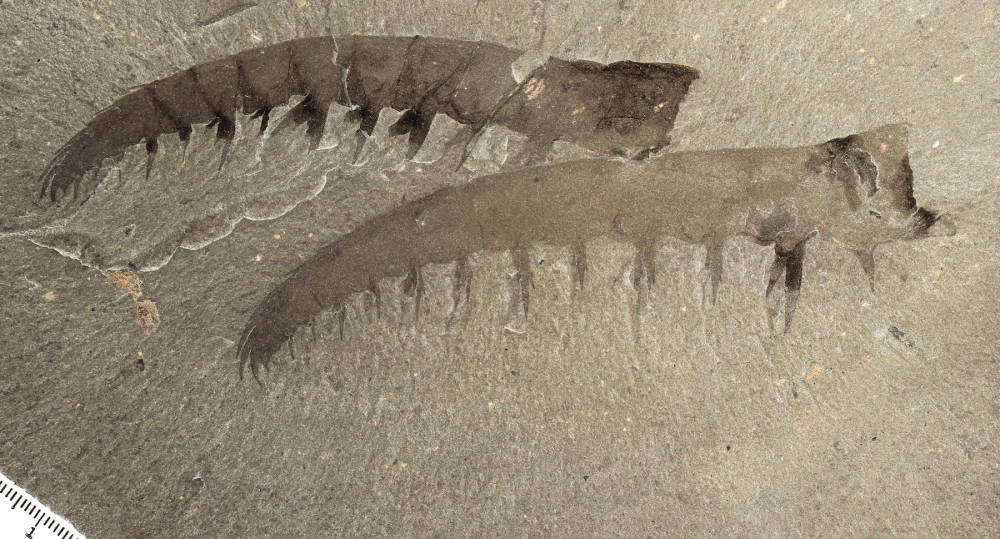The extinct apex predator Anomalocaris canadensis just got a rebrand, as new research shows these weird shrimp-like animals weren’t as tough as we used to think. Their bizarre arachnid-like front legs were thought to be absolute weapons, but modeling has now demonstrated that they might’ve struggled with crunchy prey.
If you think we’re being mean by calling it a weird shrimp, it’s worth noting that its name Anomalocaris canadensis literally means “weird shrimp from Canada”. And if the above incredible palaeoart isn’t enough to convince you of their peculiar nature, just get a load of these freaky fossils.

A close-up on the head of a complete specimen of Anomalocaris canadensis from the Cambrian Burgess Shale of Canada, showing the maximum frontal appendage flexure.
Image credit: © Alison Daley
As strange as its anatomy might first appear, it was once considered to be the weaponry of a ferocious apex predator capable of injuring armored marine animals. As a demersal hunter that would have tracked prey on the seabed, it was considered the culprit behind injuries sustained by benthic trilobites, but not everybody was convinced the appendages could have crushed up or even manipulated tough animals.
“That didn’t sit right with me, because trilobites have a very strong exoskeleton, which they essentially make out of rock, while this animal would have mostly been soft and squishy,” said lead author Russell Bicknell in a statement. Bickness is a postdoctoral researcher in the American Museum of Natural History’s Division of Paleontology, who conducted the work while at the University of New England in Australia.
To get to the bottom of this bottom-dwelling predator, Bicknell and colleagues deployed a new integrative computational approach, combining three-dimensional digital modeling, kinematics, finite-element analysis (FEA) and computational fluid dynamics (CFD) to analyze A. canadensis’s feeding appendage and test its limits.

Scorpions and whip spiders made good analogs for the segmented appendages of Anomalocaris canadensis.
Image credit: © Alison Daley
It involved building a 3D model of the weird shrimp using the 2D fossils retrieved from the Burgess Shale, a treasure trove of ancient specimens in Canada that dates back 508 million years. They were able to fill in the third dimension by leaning on scorpion and whip spider analogs, which have similar appendages.
As for grabbing and crunching trilobites, modeling revealed that A. canadensis would likely have suffered damage tackling such tough prey items. Furthermore, the computational fluid dynamics showed that it could well have been a fast swimmer, inspiring the researchers to consider an alternative predation technique for these animals.
Instead of using brute force to grasp and eat crunchy prey, A. canadensis may have capitalized on its flat body plan to zoom around chasing soft prey with its appendages extended ready to catch them. It might not be such a tough approach to feeding, but it busts the potential menu for these predators wide open.
“Previous conceptions were that these animals would have seen the Burgess Shale fauna as a smorgasbord, going after anything they wanted to,” concluded Bicknell, “but we’re finding that the dynamics of the Cambrian food webs were likely much more complex than we once thought.”
The study is published in Proceedings Of The Royal Society B.
Source Link: This Hot Mess Of A Cambrian Predator Preferred Smooth Over Crunchy Prey